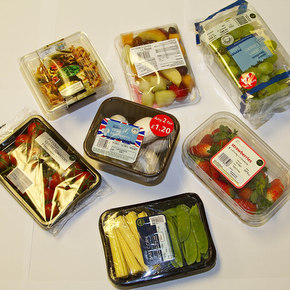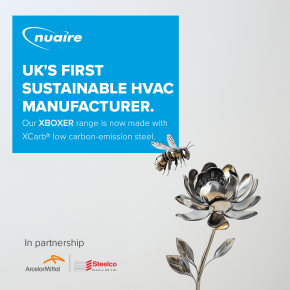
How can we increase recycling rates in the UK?
 GUEST BLOG: Richard McKinlay, Head of Engineering & Research at resource recovery specialist Axion Consulting looks at how innovation and development in technologies to increase recycling of household plastic packaging is being hampered by how we measure its collection, and a lack of economic drivers to encourage investment.
GUEST BLOG: Richard McKinlay, Head of Engineering & Research at resource recovery specialist Axion Consulting looks at how innovation and development in technologies to increase recycling of household plastic packaging is being hampered by how we measure its collection, and a lack of economic drivers to encourage investment.
There is a desire to increase recycling rates in the UK, but these rates are based on what is collected rather than what is actually recycled. As a rigorous Engineer in this sector, I believe this has a negative impact on innovation and progress towards true recycling.
Measuring recycling results
Increasing the recycling of household plastic packaging (bottles, pots, tubs, trays and films) is a key aim, enabling the conversion of this recycling stream into valuable materials and with the associated carbon benefits.
More than 75% of all local authorities in the UK are now collecting pots, tubs and trays (PTTs), which are typically made from polystyrene (PS), Polypropylene (PP) and PET. This is generating approximately 160,000 tonnes of material each year potentially for recycling. This mixed plastics pots, tubs and trays stream also includes a low level of PVC.
On the face of it this is a positive picture, and establishing a collection infrastructure is fundamental to setting up effective material recycling. However on closer inspection, the difference between collection rates and material recycling rates for pots, tubs and trays is larger than is commonly believed.
PS in PTTs is present in very small quantities and it rarely makes economic sense to recover this material. The PET is seen as a contaminant in the bottle recycling stream, and although a small volume is recycled with bottles, at levels greater than 10% it becomes problematic, and much of it cannot be economically recycled. With few end markets for recycled PET from PTTs, there are no economic drivers to process this material. Realistically only the polypropylene (PP) fraction has a chance of being recycled, so stating collection rates is, in my opinion, misleading.
The PET used in PTTs is a lower grade of polymer than that used in PET bottles and so cannot enter the same recycling stream. Each time PET is thermally processed, through extrusion or moulding, it loses strength and becomes more brittle. PET can be reacted to build the strength back up, but this carries a high operating cost. It means that recycling bottles back into bottles is not currently economically desirable, due in part to the low virgin PET price. As a result, the bottle material is used in new PET trays, which uses a lower quality polymer as standard.
This is common throughout Europe and it means there is no place in the market for a recycled PET from trays, aside from a relatively limited market in fibre. Again, the high operating cost of upgrading the polymer and limited end value restrict the viability of recycling the tray material and it is typically used for energy recovery across the continent. PET, although recyclable, is therefore currently in a rapid downward spiral with a maximum of three lifetimes, but more likely only one in the case of PET from PTTs.
Use as secondary raw material
The perception that more waste packaging is being recycled potentially damages innovation and development. With the forthcoming introduction of a ‘widely recycled’ label on household pots, tubs and tray packaging, some parts of the supply chain may consider their job done when actually it is only the first step. We need to consider the packaging right through to end of life into use as a secondary raw material.
It’s a block to innovation; packaging is a functional product that has the purpose of protecting food or goods to prevent the generation of waste. It is ideal if the packaging can be recycled, but we shouldn’t limit ourselves by simply accepting what is recyclable with today’s limited infrastructure. Instead we should focus on the value of recycling these materials and what could be possible though innovation and sensible economic drivers.
Our recent research for WRAP into the recycling process for PET pots, tubs and trays demonstrated that it is technically viable, but it is economically challenging. Improving the quality of infeed materials is vital to achieving a better yield and a more financially-viable process. This includes more targeted collection of PTTs by local authorities and improved sorting at MRFs, so that a PTT rich stream is sorted as target material.
This will have an impact on MRFs as additional sorting capacity and equipment will be required. More work is also needed to identify and establish longer term and stable markets for PET flake and pellet produced from PTTs, including demonstration trials to build confidence with end users and markets.
Ultimately, supply chain engagement and collaboration, and a realistic view on the current situation are essential if we are to recover and recycle these valuable resources. Plus the all-important economic pull/push factor!
About Axion Consulting
Axion Consulting is part of the Axion Group that develops and operates innovative resource recovery and processing solutions for recycling waste materials.
Link to more articles from Axion Consulting.
Latest news

29th April 2025
CPD Courses Available Online From Ecological Building Systems
Ecological Building Systems, a leading supplier of natural building products for sustainable construction, has revealed its comprehensive CPD programme for the year ahead.
Posted in Articles, Building Industry Events, Building Industry News, Building Products & Structures, Building Services, Continuing Professional Development (CPD's), Information Technology, Innovations & New Products, Insulation, Restoration & Refurbishment, Retrofit & Renovation, Seminars, Sustainability & Energy Efficiency, Training, Walls, Waste Management & Recycling
29th April 2025
WindowBASE launches new prospect databases at FIT Show
Visit WindowBASE at the FIT Show to see first-hand how it helps companies find new customers – the company is launching an easy-to-use, intuitive platform on Stand G16 at the NEC Birmingham from 29th April – 1st May.
Posted in Articles, Building Industry Events, Building Industry News, Building Products & Structures, Building Services, Doors, Exhibitions and Conferences, Glass, Glazing, Information Technology, Innovations & New Products, Posts, Publications, Research & Materials Testing, Restoration & Refurbishment, Retrofit & Renovation, Windows
28th April 2025
Nuaire first UK ventilation manufacturer to use low carbon-emissions recycled & renewably produced steel
Nuaire has announced that its Magnelis® steel based ventilations systems are now being made from XCarb® recycled and renewably produced steel.
Posted in Air Conditioning, Articles, Building Industry News, Building Products & Structures, Building Services, Building Systems, Heating, Ventilation and Air Conditioning - HVAC, Restoration & Refurbishment, Retrofit & Renovation, Steel and Structural Frames, Sustainability & Energy Efficiency, Waste Management & Recycling
28th April 2025
Renderplas: Builders avoid costly remedial work with PVCu render beads
A pioneer of PVCu render beads, Renderplas is helping the construction industry avoid the costly remedial work associated with rusting steel designs…
Posted in Articles, Building Industry News, Building Products & Structures, Building Services, Building Systems, Facades, Posts, Render, Restoration & Refurbishment, Retrofit & Renovation, Sustainability & Energy Efficiency, Walls
 Sign up:
Sign up: